How Brave Must You Be to Come Close to These Horned Animals? – 12 Pictures
Some animals on this list are very big and strong. Others are lean and very, very fast. This all helps them to stay safe from predators since many face them in great numbers. But all the traits of these fantastic animals are nothing in comparison to their beautiful and fear-inducing horns.
Blackbuck – the Indian antelope
This antelope is endemic to India and has a fantastic set of horns. Although usually only males develop horns, some females also have them, but they don’t grow as much. Males can grow horns as big as 30 inches. This antelope is active during the day, but during hotter summer days they slow down their activity around noon. They prefer grasslands close to water, but can be also found in some deserts and mountains. They are also one of the fastest animals around since they can run at 50 miles per hour.
1 / 12

Black wildebeest – avoided extinction
Black wildebeest is also known as white-tailed gnu. They are pretty big and strong, but that doesn’t affect their speed since they can develop speed up to 50 miles per hour. Both males and females have strong and big horns (around 30 inches) which separates them from their close relatives, blue or common wildebeest. These fascinating animals were once close to extinction.
2 / 12
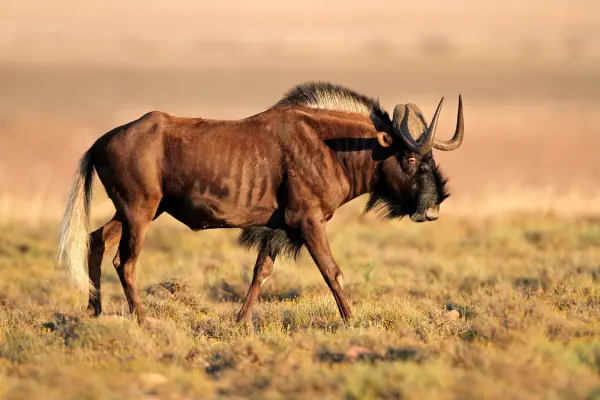
Yak – the great alpinist
Male yaks have thick and strong horns that can grow up to 40 inches. It is endemic to China and Tibet and can survive high elevations since they have big lungs and can inhale large amounts of oxygen. These huge animals like a cold bath and have an internal heater which keeps them warm in very low temperatures. Yak cheese is considered delicatessen, but it is also very rich in healthy fats, so if you ever come across it, don’t hesitate to try.
3 / 12

Markhor – a goat or a snake?
These goat species are known for their unbelievable horns. They are around 5 feet long and have a spiral look, but only males develop these. Females can have horns, but they are much, much smaller. Markhor is national animal of Pakistan and in the Persian language their name means snake, probably because of the horns that kind of look like a snake. They are great climbers and spend a lot of their time on steep cliffs in order to avoid predators.
4 / 12
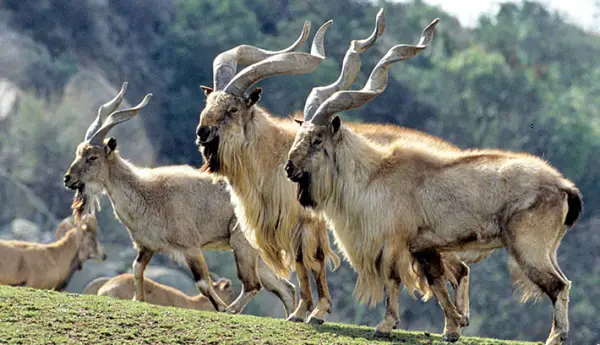
Giant Eland – the gracious giant
This is another type of antelope endemic to Africa and the largest one in the world. Their V-shaped horns are swirly near the head before they straight out and can grow to 4 feet long on males and 2 feet on females. Eland is Dutch name for elk or moose. They can be domesticated and their milk is richer in protein than cow milk. Giant eland is also very fast animal since it can run at around 45 miles per hour.
5 / 12
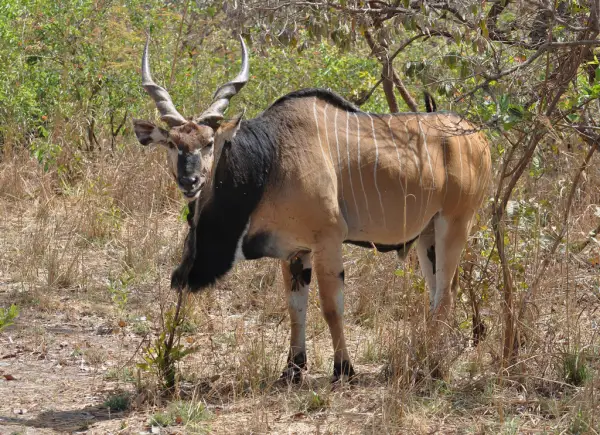
Bharal – the blue sheep
Bharal is a medium – sized sheep found in the Himalayas and other high mountains in Asia. They live in small groups with no more than 20 members. Bharal is also known by the name Himalayan blue sheep for their bluish and grayish coats that help them camouflage and avoid predators like snow leopards or wolves. Their horns can grow up to 30 inches and have a very strange look since they grow sideways and then backward.
6 / 12

Mouflon – the wandering sheep
This wild sheep has 5 subspecies that can be found in Asia and Europe. Unfortunately, these animals are often the object of recreational hunt since they have very prized horns. Males have spiral horns that grow their entire life and thus can be very large, around 25 inches. They are nocturnal and nomadic animals that live in separate groups, so males and females mix only at mating time.
7 / 12
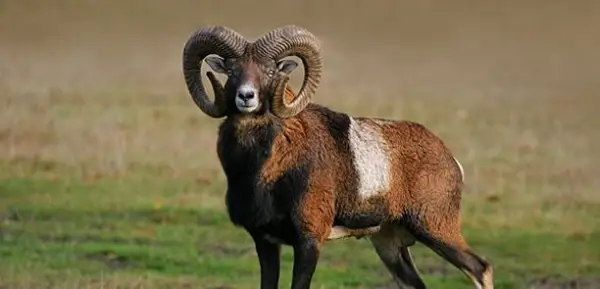
Gemsbok – the most colorful antelope
Gemsbok is a large type of antelope that lives in savannas and open grasslands of South-West Africa. It is accustomed to life in hot temperatures. Both sexes have large, straight growing horns that can be 30 inches long. It is nocturnal animals that feeds at night and rests in shades during the day. They live in large herds that can have up to 40 members.
8 / 12
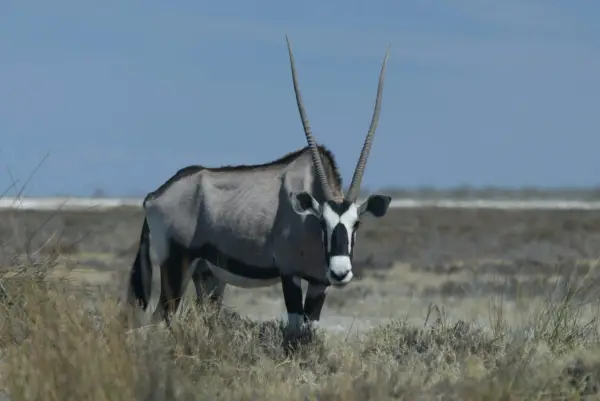
African buffalo – he will remember you
African buffalo is only wild cattle species found on this continent. Their horns are not the biggest around (usually smaller than 16 inches), but they are special since they grow out of the strong bosses on their forehead. They are very large animals, much stronger than other cattle and live in huge herds that can sometimes consist of hundreds of members. Buffalos also have a fantastic memory and can remember human faces.
9 / 12
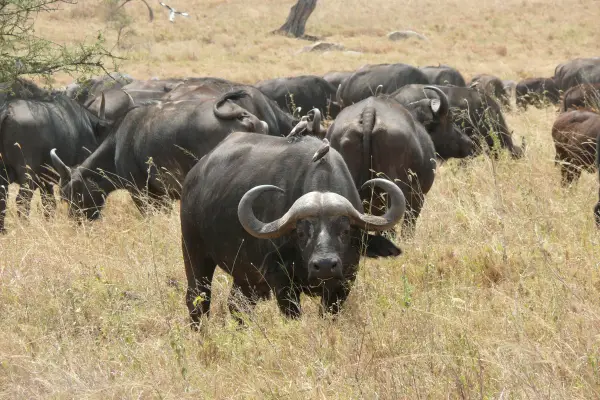
Nyala – the barking antelope
Nyala is antelope species that lives in southern Africa. They always try to stay in the areas permanently rich with water and grass. Males have a gray coat with stripes and horns that can grow to 28 inches. This beautiful animal has a great hearing, but poor eyesight. They produce barking sounds when in danger.
10 / 12
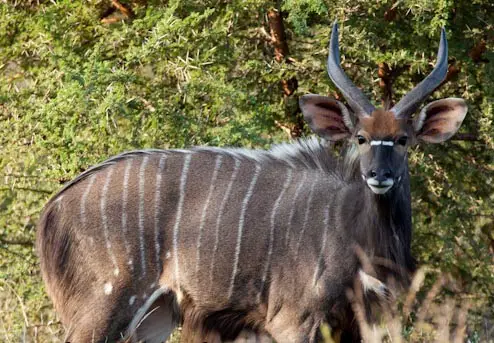
Addax – the screw horn antelope
These antelopes are a critically endangered species, found in some isolated parts of Sahara desert. Their coat color changes in accordance with a season since in summer it becomes lighter. Both sexes have big, strong horns with a couple of twists and can grow to be around 4 feet. They are nocturnal animals adapted to high temperatures.
11 / 12
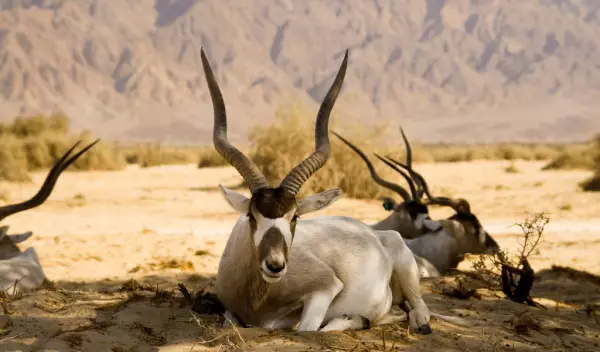
Siberian ibex – biggest horns in the family
There are many ibex species and they all have great, big horns that put others to shame, but the biggest horn in all ibex family belongs to Siberian ibex. Their bow-shaped horns can grow to almost 5 feet long. This wild goat lives in steep mountains and rocky areas where it is safe from predators. Adults can produce a sound similar to whistle to warn other members of predators.
12 / 12
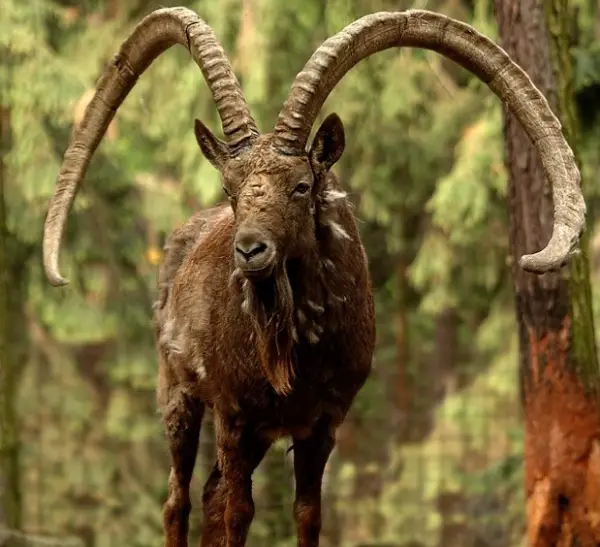
Image sources:
1: http://sandstonemountainranch.homestead.com/blackbuck.html
2: http://www.huntingtrophy.com/the-black-wildebeest-in-africa-bringing-home-a-trophy-bull-2/
3: http://www.springbrook.com/Tibetan-yak/Tibetan-yak-bulls/yak-bulls.html
4: http://animals.sandiegozoo.org/animals/goat-sheep
5: https://www.flickr.com/photos/24580998@N08/14186977542
6: https://www.bebiviral.com/mobile/article/8-best-horns-animal-world/4/Bharal
7: http://www.huntingpleasure.com/lang-en/116-Hongrie-Mouflons.html
8: http://tomsheck.com/thumbs199-1.htm
9: https://en.wikipedia.org/wiki/African_buffalo
10: http://www.gregorysweeney.photography/?p=3723
11: https://animalcorner.co.uk/animals/addax/
12: http://www.biolib.cz/en/image/id28668/
